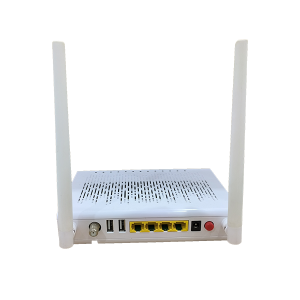Products
What is Layer 3 Switch?
What is Layer 3 Switch?,
,
Main Features
S5456XC is a layer-3 switch with 48 x 25GE(SFP+) and 8 x 100GE(QSFP28) functions. It is a next-generation intelligent access switch for carrier resident networks and enterprise networks. The software function of the product is very rich, static routing support IPv4 / IPv6, exchange capacity, strong and stable support RIP/OSPF/RIPng/OSPFv3 / PIM routing protocols, and other features. The forwarding bandwidth and forwarding capability are large, meeting the needs of data centers on core networks and backbone networks.
FAQ
Q1: Can you tell me about your payment term?
A: For samples, 100% payment in advance. For bulk order, T/T, 30% advance payment, 70% balance before shipment.
Q2: How is your delivery time?
A: 30-45days, if your customization too much, it will take a little longer.
Q3: Can your ONTs/OLTs be compatible with third-party products?
A: Yes, our ONTs/OLTs are compatible with third party products under standard protocol.
Q4: How long is your warranty period?
A: 1 year.
Q5: What is the difference between EPON GPON OLT and XGSPON OLT?
The biggest difference is that XGSPON OLT support GPON/XGPON/XGSPON, Faster Speed.
Q6: What are the accepted payment methods for your company?
For sample, 100% payment in advance. For batch order, T/T, 30% deposit, 70% balance before delivery.
Q7: Does your company have its own brand?
Yes, our company brand is Limee.A Layer 3 switch is a type of network switch that operates at the network layer of the OSI model. This means that it has the capability to make routing decisions based on IP addresses, just like a router. Layer 3 switches are commonly used in enterprise networks to connect different subnets and make decisions about where to forward traffic.
So, what exactly is a Layer 3 switch and how does it differ from a traditional Layer 2 switch? A Layer 2 switch operates at the data link layer of the OSI model and makes forwarding decisions based on MAC addresses. While it is efficient at forwarding traffic within a single subnet, it lacks the ability to make routing decisions for traffic going to different subnets. This is where a Layer 3 switch comes in.
A Layer 3 switch combines the functionality of a traditional Layer 2 switch with the routing capabilities of a router. It is capable of creating virtual LANs (VLANs) and routing traffic between them, as well as making decisions about the best path for traffic to take through a network. This makes it a powerful tool for managing and optimizing network traffic in large, complex networks.
One of the key benefits of using a Layer 3 switch is its ability to improve network performance. By offloading some of the routing functions from the core router to the Layer 3 switch, network traffic can be distributed more efficiently, leading to faster and more reliable communication between devices on the network.
Overall, a Layer 3 switch is a valuable asset for organizations with complex networking needs. Its ability to combine the functions of a switch and a router makes it an essential component for managing and optimizing network traffic. As businesses continue to rely on robust and efficient networking solutions, Layer 3 switches will continue to play a critical role in ensuring that data moves seamlessly and reliably throughout the network.
|
Product Specifications |
|
|
Energy saving |
Green Ethernet line sleep capability |
|
MAC Switch |
Statically configure MAC address Dynamically learning MAC address Configure aging time of MAC address Limit the number of learned MAC address MAC address filtering IEEE 802.1AE MacSec Security control |
|
Multicast |
IGMP v1/v2/v3 IGMP Snooping IGMP Fast Leave MVR, Multicast filter Multicast policies and multicast number limits Multicast traffic replicate across VLANs |
|
VLAN |
4K VLAN GVRP Functions QinQ Private VLAN |
|
Network Redundancy |
VRRP ERPS automatic ethernet link protection MSTP FlexLink MonitorLink 802.1D(STP)、802.1W(RSTP)、802.1S(MSTP) BPDU protection, root protection, loop protection |
|
DHCP |
DHCP Server DHCP Relay DHCP Client DHCP Snooping |
|
ACL |
Layer 2, Layer 3, and Layer 4 ACLs IPv4、IPv6 ACL VLAN ACL |
|
Router |
IPV4/IPV6 dual stack protocol IPv6 neighbor discovery, Path MTU discovery Static routing, RIP/RIPng OSFPv2/v3、PIM dynamic routing BGP, BFD for OSPF MLD V1/V2, MLD snooping |
|
QoS |
Traffic classification based on fields in L2/L3/L4 protocol header CAR traffic limit Remark 802.1P/DSCP priority SP/WRR/SP+WRR queue scheduling Tail-drop and WRED congestion avoidance mechanisms Traffic monitoring and traffic shaping |
|
Security Feature |
ACL recognition and filtering security mechanism based on L2/L3/L4 Defends against DDoS attacks, TCP SYN Flood attacks, and UDP Flood attacks Suppress multicast, broadcast, and unknown unicast packets Port isolation Port security, IP+MAC+ port binding DHCP sooping、DHCP option82 IEEE 802.1x certification Tacacs+/Radius remote user authentication, Local user authentication Ethernet OAM 802.3AG (CFM), 802.3AH (EFM) various Ethernet link detection |
|
Reliability |
Link aggregation in static /LACP mode UDLD one-way link detection ERPS LLDP Ethernet OAM 1+1 power backup |
|
OAM |
Console、Telnet、SSH2.0 WEB Management SNMP v1/v2/v3 |
|
Physical Interface |
|
|
UNI Port |
48*25GE, SFP28 |
|
NNI Port |
8*100GE, QSFP28 |
|
CLI Management port |
RS232, RJ45 |
|
Work Environment |
|
|
Operating Temperature |
-15~55℃ |
|
Storage Temperature |
-40~70℃ |
|
Relative Humidity |
10%~90%(No condensation) |
|
Power Consumption |
|
|
Power Supply |
1+1 dual power supply, AC/DC power optional |
|
Input Power Supply |
AC: 90~264V, 47~67Hz; DC : -36V~-72V |
|
Power Consumption |
Full load ≤ 180W, idle ≤ 25W |
|
Structure Size |
|
|
Case shell |
Metal shell, air cooling and heat dissipation |
|
Case dimension |
19 inch 1U, 440*390*44 (mm) |
Products categories
-

Phone
-

Email
-

Whatsapp
-

Skype
-

Top


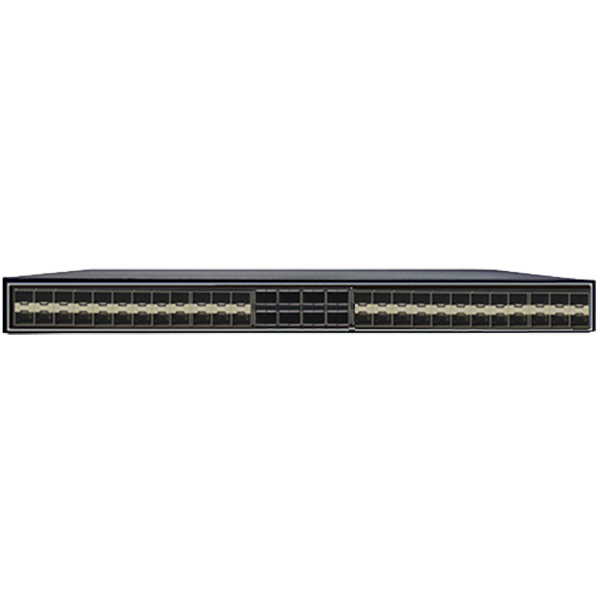
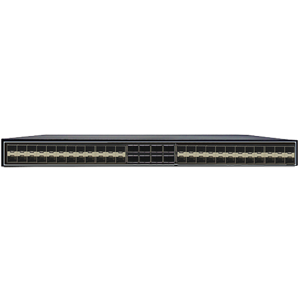
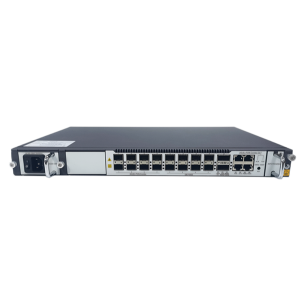
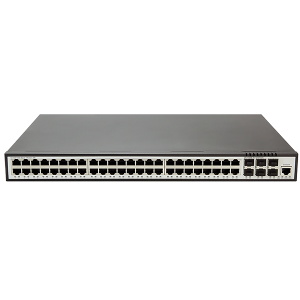
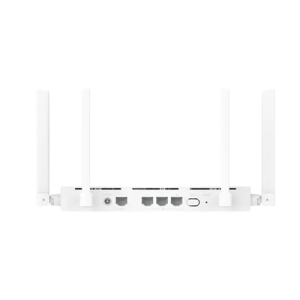
11-300x300.png)
